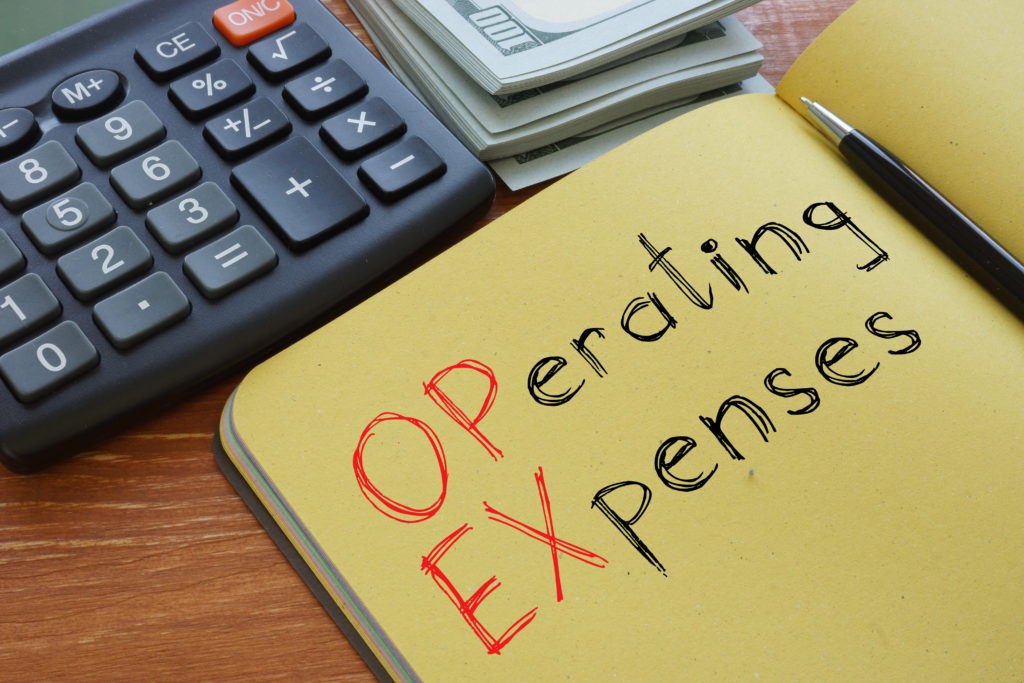Operating Expenses: What Small Businesses Need to Know

Table of Contents
When managing operating expenses for your small business, it’s important to understand their impact on your overall profitability. By controlling and optimizing these expenses, you can improve your bottom line and ensure the long-term success of your business.
One key aspect of managing operating expenses is distinguishing them from the cost of goods sold (COGS). While COGS represents the direct costs of producing or acquiring the goods or services you sell, operating expenses encompass all the other costs involved in running your business smoothly.
Let’s jump deeper into the common operating expenses that small businesses encounter:
-
Rent: The cost of leasing or renting office space, retail stores, or warehouses.
-
Utilities: Expenses for electricity, water, heating, and other necessary utilities to keep your business running.
-
Property Taxes: Taxes levied on the property your business occupies.
-
Business Travel: Costs associated with travel, such as airfare, accommodation, meals, and transportation, for business-related purposes.
-
Office Supplies: Expenses for stationery, printing materials, and other supplies needed for daily operations.
-
Equipment: Costs related to purchasing or leasing equipment required for your business, such as computers, machinery, or vehicles.
-
Marketing: Expenditures on advertising, promotions, and other marketing strategies to attract customers and increase sales.
-
Insurance: Premiums paid for business insurance, including general liability, property, and professional liability insurance.
-
Wages: Salaries, wages, benefits, and payroll taxes for your employees.
-
Miscellaneous Costs: Other expenses specific to your business, such as licenses and permits, professional fees, repairs and maintenance, and software subscriptions.
To optimize your operating expenses, consider implementing the following strategies:
-
Automation: Use technology to automate repetitive tasks, streamline workflows, and reduce the need for manual labor.
-
Cost Comparison: Research and compare prices from different vendors before making purchasing decisions. Negotiate with suppliers to secure the best deals.
-
Lease Negotiation: If you plan to stay in a location for an extended period, negotiate with your landlord to obtain favorable rental terms.
-
Membership Benefits: Explore membership programs or partnerships that offer discounts or cost-saving opportunities for essential business services.
-
Bulk Purchasing: Buy office supplies in bulk to take advantage of volume discounts and minimize recurring expenses.
-
Resource Optimization: Encourage your team to find creative ways to do more with less, maximizing the efficiency of available resources.
-
Budgeting: Develop an operating expenses budget to allocate funds appropriately, set targets, and monitor expenses regularly.
Remember, keeping your operating expenses in check can increase your business’s profitability, improve financial stability, and free up resources for growth and investment.
Consider incorporating these strategies into your daily operations and continually reassessing your expenses to ensure you maximize the value of every dollar spent. You’ll position your small business for long-term success by maintaining control over your operating expenses.

How does cutting costs help small businesses, and how to do it?
-
Improved Cash Flow: By reducing expenses, you can enhance your business’s cash flow. This allows you to have more working capital for day-to-day operations, expansion, or investment in areas that generate higher returns.
-
Financial Viability: Maintaining low costs demonstrates to banks and investors that your business is well-managed and financially stable. This can increase your chances of securing funding or investment in the future.
-
Enhanced Profitability: Cutting costs directly impacts your bottom line, leading to increased profits. By minimizing unnecessary expenditures, you improve your profit margins and create more room for growth and reinvestment.
To effectively cut costs, consider the following strategies:
-
Seek Free Resources: Utilize free sources of information, tools, and resources available online or through industry associations. This can include educational materials, webinars, and business templates.
-
Embrace Digital Processes: Go paperless wherever possible to reduce expenses related to printing, storage, and document handling. To streamline operations and save costs, utilize electronic communication, cloud storage, and digital project management tools.
-
Establish and Follow a Budget: Develop a comprehensive budget that outlines your anticipated income and expenses. Regularly review and adjust it to ensure you stay on track and identify areas where you can trim costs.
-
Consider Refurbished Equipment: Instead of purchasing brand-new equipment, explore the option of buying refurbished or used equipment. This can significantly reduce upfront costs while still meeting your business’s operational needs.
-
Optimize Inventory Management: Implement effective inventory management practices to avoid overstocking or understocking. This helps reduce storage costs, minimize waste, and ensure you have the right amount of inventory to meet customer demand.
-
Leverage Technology: Utilize technology tools and software that automate tasks, streamline processes, and improve efficiency. This can reduce labor costs, eliminate manual errors, and save time for more value-added activities.
-
Negotiate with Suppliers: Regularly evaluate your vendor relationships and seek out alternative suppliers who can offer better prices or discounts. Negotiate favorable terms, bulk discounts, or long-term contracts to reduce procurement costs.
-
Explore Crowdfunding: Consider crowdfunding as a financing option for specific projects or initiatives. It allows you to raise funds from a large number of individuals who are interested in supporting your business.
-
Eliminate Non-Essential Expenses: Review all expenses and eliminate unnecessary privileges, such as magazine subscriptions or unused software licenses. Focus on essential expenditures that directly contribute to the growth and efficiency of your business.
-
Outsource and DIY: Assess which tasks can be outsourced to external professionals or agencies, reducing the need for hiring full-time staff. Additionally, embrace a do-it-yourself mindset where applicable, especially for simpler tasks that you or your team can handle effectively.
-
Optimize Banking and Credit Card Benefits: Choose bank accounts and credit cards that offer benefits tailored to small businesses, such as cashback rewards, discounts on certain purchases, or favorable interest rates.
By implementing these cost-cutting measures, you can increase your financial stability, improve your business’s profitability, and create opportunities for growth and success.
Step By Step Operation Expenses Management Plan
-
Conduct a Comprehensive Expense Review:
- Review your current operating expenses in detail, categorizing them and identifying areas where costs can potentially be reduced or optimized.
- Analyze expense trends and patterns to understand the underlying factors contributing to high expenses.
-
Prioritize Essential Expenses:
- Differentiate between essential and non-essential expenses. Focus on reducing or eliminating non-essential costs while safeguarding investments in quality and growth-related areas.
-
Engage Employees in Cost-Saving Initiatives:
- Encourage a cost-conscious mindset among your employees. Communicate the importance of expense management and involve them in identifying cost-saving opportunities.
- Implement an incentive or recognition system to reward employees for innovative cost-saving ideas.
-
Seek Competitive Bids and Negotiate with Vendors:
- Regularly review vendor contracts and seek competitive bids to ensure you are getting the best value for products and services.
- Negotiate for better pricing, volume discounts, or extended payment terms. Building strong relationships with vendors can lead to mutually beneficial cost-saving opportunities.
-
Optimize Resource Utilization:
- Analyze resource allocation, including labor, equipment, and materials, to identify opportunities for efficiency improvements.
- Cross-train employees to ensure flexibility and optimal utilization of skills.
- Implement preventive maintenance programs to extend the lifespan of equipment and reduce repair costs.
-
Embrace Technology and Automation:
- Identify areas where technology and automation can streamline processes, improve efficiency, and reduce labor costs.
- Evaluate software solutions, robotics, or artificial intelligence that can automate repetitive tasks and minimize human error.
-
Implement Effective Inventory Management:
- Adopt inventory control techniques such as just-in-time (JIT) or just-in-sequence (JIS) to minimize inventory carrying costs while ensuring on-time availability of materials.
- Utilize forecasting tools and demand planning to optimize inventory levels, reducing waste and storage expenses.
-
Continuously Monitor and Track Expenses:
- Establish a regular review process to monitor and track operating expenses. Use financial reports and dashboards to identify cost-saving opportunities and track progress.
- Analyze budget variances and investigate any significant deviations to address potential cost overruns or inefficiencies.
-
Foster a Culture of Continuous Improvement:
- Encourage all employees to contribute ideas for cost-saving and process improvement.
- Implement regular brainstorming sessions or suggestion boxes to gather suggestions for reducing expenses while maintaining quality and growth.
-
Invest in Training and Development:
- Provide training and development opportunities to employees to enhance their skills and knowledge, leading to increased productivity and efficiency.
- Well-trained employees are more likely to deliver quality outputs, reducing the need for rework or customer complaints.
Remember, the goal is not only to cut costs but also to optimize expenses strategically. Continuously review and adapt your expense management strategies to align with your business objectives, ensuring a balance between cost control, quality, and sustainable growth.
Conclusion
Effectively managing operating expenses is crucial for small businesses. Businesses can enhance profitability, improve cash flow, and maintain financial stability by implementing strategies to review, control, and minimize expenses without sacrificing quality and growth. Through careful expense tracking, prioritizing essential costs, leveraging technology, optimizing resource utilization, and fostering a culture of continuous improvement, businesses can achieve cost savings while preserving the integrity of their operations. By striking the right balance between cost control and growth, small businesses can position themselves for long-term success in a competitive marketplace.


